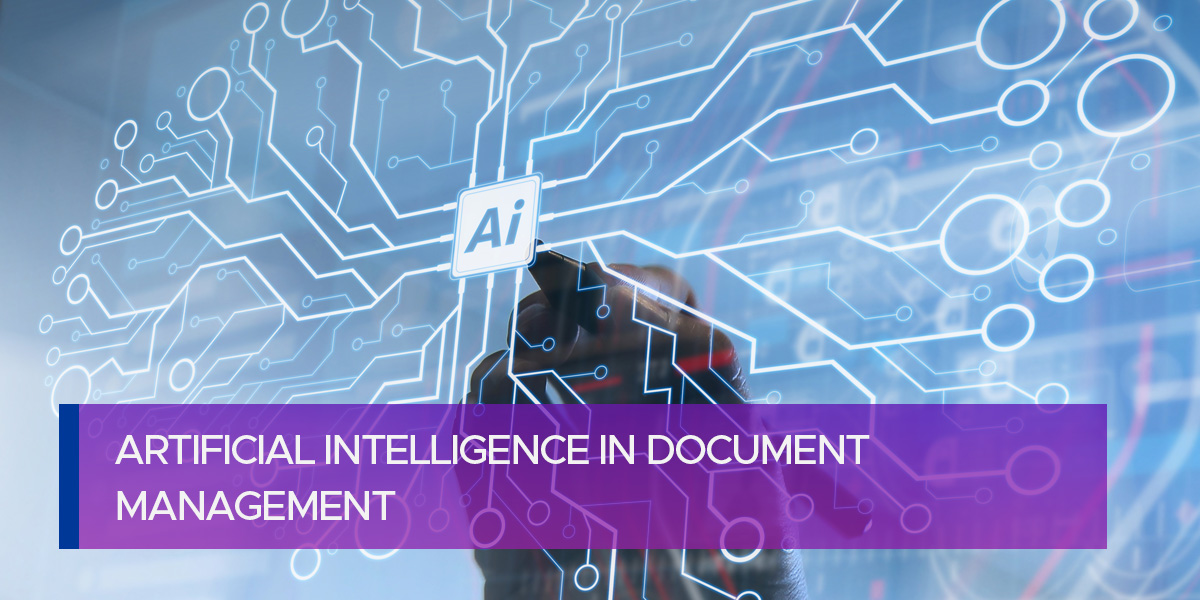
Artificial Intelligence in Document Management
Documents are the lifeblood of any business but managing them is getting more and more complicated. Digitizing paper documents was a big step in keeping things organized, but it also created issues itself. In fact, a recent Harris Interactive survey of 1,004 knowledge workers found 83% lose time to versioning issues alone every day.
Losing documents causes major issues for any business. Customer service is unable to answer questions, IT is unable to resolve problems, and an entire business can shut down due to lack of documentation. Thankfully, modern AI-based document management software is making process optimization easier than ever to bring order to the chaos.
Exploring AI-Based Document Management Software
Although each business is different, the flow chart of documentation remains basically the same these days. When physical mail is received, for example, the mailroom opens, sorts, and scans documents into the system. From there, optical character recognition (OCR) programs extract data into forms, form fields are analyzed, and documents are pushed through a series of business rules to process them.
When exceptions to business rules are found, document management software then routes those exceptions into queues for business units to work. This process is easily scalable to accommodate small businesses all the way up to the biggest enterprises, and AI is now being used to further provide process optimization.
1. Refining OCR with AI
OCR has been in use since the digitization of paper documents began in the late 20th century. While useful, implementing OCR takes a lot of manual labor to accommodate each type of paper document you receive. A mortgage company, for example, needs to track insurance. Each insurance company (and there are a lot) has different forms for declarations, endorsements, cancellations, etc.
Each of these standardized forms requires the OCR platform to be manually configured. When an insurance company changes a template, your OCR must change too. Otherwise, large volumes of digitized documents can be affected, creating major problems. OCR can recognize patterns, but it can’t adapt to changes in these patterns. This is where AI comes in.
Deep Neural Networks and machine-learning algorithms are used to scan documents for both text and the context. This replicates the process already being performed by data entry, data verification, and exceptions processing teams. If a field is moved in a document template, today’s AI-powered OCR is much more likely to catch it.
On top of this, even the best OCR programs can have trouble reading handwritten text that isn’t as structured and uniform as a typed font. Even humans can sometimes have trouble reading our own writing. AI is consistently getting better at converting a handwritten physical document into typed text in a digital document.
2. Refining Data Classification with AI
Once documents are scanned, they’re immediately sorted into queues. A human can intuitively look at most documents and understand the context. Machines, however, need to follow strict rules. Variations in documents must be analyzed to determine if the volume is large enough to require more business rules being programmed into the process.
The more business rules you add, the more documents will except out for humans to analyze. One document can be presented to your data verification staff 1000 times for failing each of 1000 rules. One business rule change can create hundreds of FTE hours of overtime to work through. AI is changing this.
Because AI enables multi-way search, it can validate data much faster than even a human a can. It doesn’t require the same step-by-step approach. So, instead of feeding a document through 1000 different business rules, AI applies them all simultaneously to pinpoint exactly what a document is and what needs to occur.
Achieve Process Optimization with AI
AI isn’t changing document management; it’s simply optimizing processes to make it faster and more efficient. It used to take multiple people to process a single document – mailroom staff scans it, data entry fills out empty fields, data verification double-checks erroneous info, and exceptions processing works any extraneous documents the business rules kick out.
Today’s AI-powered document management software automates many of these functions and removes any unnecessary touchpoints. It also standardizes processes and provides data monitoring. This increases data security (the fewer people who see a document, the more secure it is) and processing speed while reducing operational costs.
Contact us today to find out how AI-based document management software can improve process optimization in your business.
